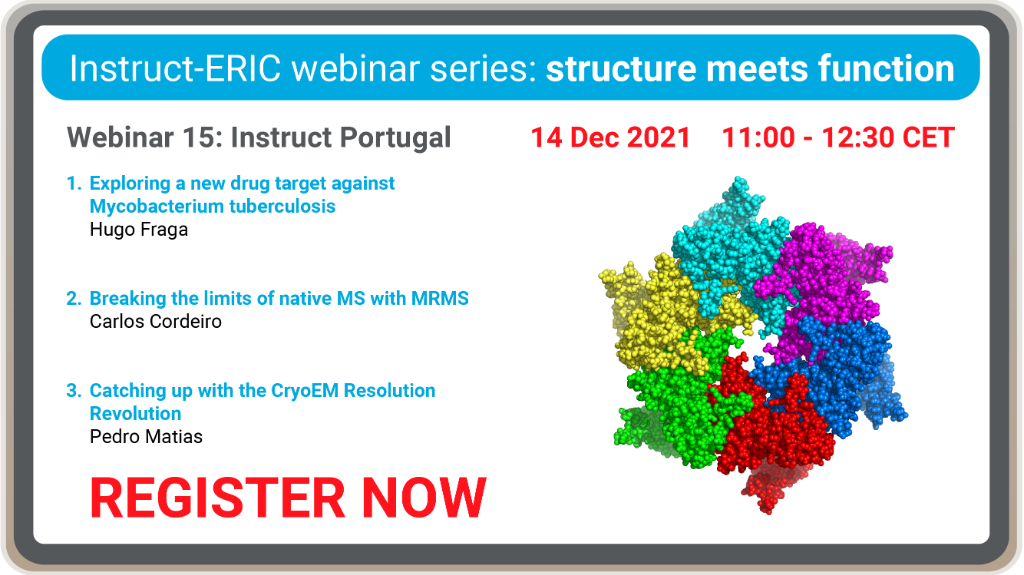 Instruct
InstructFeaturing expert speakers from Instruct Centres across Europe, Instruct-ERIC Webinar Series: Structure Meets Function highlights some of the latest developments in structural biology, demonstrating how integrative methods are enabling scientists to decipher the mechanisms that underpin health and disease.
Watch the previous webinars in the series here.
The 15th webinar in the series will be hosted by Instruct Portugal on 14 December 2021, 11:00 - 12:30 CET. Register for the webinar here.

Webinar Moderator: Maria Arménia Carrondo, Universidade Nova de Lisboa
Talk 1: Exploring a new drug target against Mycobacterium tuberculosis
Speaker: Hugo Fraga
Affiliation: Departamento de Biomedicina, Faculdade de Medicina e i3S, Instituto de Investigação e Inovação em Saúde, Universidade do Porto, Porto, Portugal.
Abstract: Tuberculosis (TB) kills more than a million people every year worldwide and with growing antibiotic resistance it is fundamental to find new targets and new molecules against TB. Here we report the use of Cryo-EM to structurally characterise a recently found TB target in the presence of 2 natural product antibiotics. The results obtained will allow the characterisation of their mode of action and help in the development of new molecules that bind to the same pockets.
Talk 2: Breaking the limits of native MS with MRMS
Speaker: Carlos Cordeiro
Affiliation: FT-ICR and Structural Mass Spectrometry Laboratory, Ciências, Ulisboa
Abstract: Native MS is a fundamental methodology for the structural characterisation of macromolecules, providing information on its mass, stability, and dynamics, from minute amounts of sample. Among its applications are the determination of macromolecular complexes stoichiometry, small molecule binding, and protein and complex assemblies, from small proteins to large viral particles. Native MS is often preformed on highly tuned, modified mass spectrometers that preserve structure and interactions in the gas phase. However, resolutions fall short of the achievable potential of any of these instruments mainly due to gas-phase desolvation and intrinsic resolving power of the mass spectrometers. Magnetic Resonance Mass Spectrometry (MRMS) provides the highest resolving power of any other mass spectrometer, allowing for the extensive manipulation and diversity of fragmentation methods for structural interrogation of gas-phase macromolecular complexes. Here we show the potential and applications of MRMS in the field of structural biology.
Talk 3: Catching up with the CryoEM Resolution Revolution
Speaker: Pedro Matias
Affiliation: ITQB NOVA – Universidade Nova de Lisboa
Abstract: In the aftermath of the 2017 Nobel Prize in Chemistry awards, the ITQB NOVA launched an initiative to create a national CryoEM facility that led to the creation of a National Advanced Microscopy Network for Health and Life Sciences. The purchase of a 200 kV instrument was recently approved, and it is expected to be operational before the end of 2022. In parallel, ITQB NOVA researchers obtained a H2020 EU Twinning grant that will allow the transfer of know-how in sample preparation, data collection and processing for Single Particle and Tomography applications from experts in Spanish, Finnish and Israeli labs.